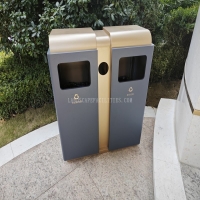Welcome to the website for landscape facilities products and knowledge.
What are the options for integrating weather or environmental monitoring into the table?
In today's interconnected world, the humble table is evolving beyond its traditional function to become a sophisticated data hub. The integration of weather and environmental monitoring capabilities into tables represents a fascinating convergence of furniture design and smart technology. Several innovative options exist for this integration, ranging from simple add-ons to fully embedded systems.
One primary approach involves incorporating IoT environmental sensors directly into the table structure. These can include temperature sensors, humidity detectors, air quality monitors, and barometric pressure gauges. These sensors can be discreetly placed beneath the table surface or integrated into the table legs, continuously collecting real-time environmental data without compromising the table's aesthetic appeal.
Another popular option is the integration of smart displays into table surfaces. With the advancement of transparent OLED technology and touch-sensitive screens, tables can now showcase weather patterns, environmental metrics, and climate data directly on their surfaces. These displays can show everything from basic temperature readings to complex weather maps and air quality indexes, transforming the table into an interactive information center.
For more subtle integration, ambient lighting systems can be incorporated that change color based on environmental conditions. A table could feature LED strips that shift from blue to red as temperature changes, or from clear to amber as air quality deteriorates. This provides immediate visual feedback about environmental conditions without requiring users to interpret complex data.
Wireless connectivity options enable tables to connect to external weather stations and environmental monitoring networks. Through Bluetooth, Wi-Fi, or cellular connections, a table can display not just localized sensor data but also regional weather forecasts, pollen counts, UV indexes, and other relevant environmental information from professional meteorological sources.
Modular design approaches allow users to customize their environmental monitoring capabilities. Tables can be designed with standardized ports and docking stations where users can attach various environmental sensors based on their specific needs—from basic temperature monitors to sophisticated radiation detectors or noise level meters.
The power supply for these integrated systems can be managed through various methods, including built-in batteries rechargeable via wireless charging pads, solar panels integrated into the table surface, or traditional power adapters. Energy-efficient designs ensure that monitoring capabilities can operate continuously without frequent recharging.
Data visualization represents another crucial aspect of environmental monitoring integration. Tables can be programmed to display information through various formats—from simple numerical readouts to graphical representations, historical trend lines, and predictive analytics. This transforms raw environmental data into actionable insights for users.
The applications for weather-integrated tables span multiple environments. In homes, they can help monitor indoor air quality and comfort levels. In offices, they can contribute to workspace optimization and employee wellbeing. Educational institutions can use them as teaching tools for environmental science, while research facilities can employ them for continuous laboratory monitoring.
As technology advances, we're seeing the development of self-powered environmental monitoring tables that harvest energy from ambient sources like light, temperature differences, or even kinetic energy from objects placed on the surface. These innovations promise completely autonomous operation without external power requirements.
The future of environmental monitoring in furniture points toward increasingly seamless integration, where monitoring capabilities become invisible yet omnipresent, providing valuable environmental insights without intruding on the table's primary function as a functional surface for work, dining, or social interaction.
Related search:

Recommendation
Double-bucket garbage bin, outdoor, metal, multi-color, powder-coated, double-bucket trash can